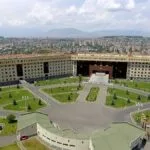The dawn of 2025 was overshadowed by a shocking event as a Tesla Cybertruck exploded outside the Trump International Hotel in Las Vegas, leaving one person dead and seven injured. The incident has sparked widespread debate and speculation, not only for its tragic outcome but also for its implications on public safety, the security of high-profile locations, and the potential vulnerabilities of advanced vehicle technologies.
At around 8:40 AM local time, the explosion disrupted the typically bustling environment surrounding the Trump International Hotel. Witnesses described a sudden eruption of flames from the vehicle, followed by a powerful explosion that ripped through the Cybertruck, hurling its roof several feet away. Surveillance footage shows the truck appearing normal before the blast, adding to the mystery surrounding the event’s cause.
Law enforcement agencies, led by the Las Vegas Metropolitan Police Department and supported by the FBI, swiftly cordoned off the area to begin investigations. Given the high-profile location and its association with former President Donald Trump, initial concerns pointed toward terrorism. However, authorities remain cautious about confirming whether the explosion resulted from malicious intent or an unforeseen accident.
The sole fatality was the Cybertruck’s driver, while seven bystanders sustained injuries ranging from minor burns to lacerations caused by flying debris. Emergency services quickly transported the injured to nearby hospitals, and as a precaution, the Trump International Hotel was evacuated. Guests were temporarily relocated to Resorts World while investigators combed through the site for evidence.
One of the key leads in the investigation involves the vehicle’s cargo. Authorities revealed that the Cybertruck was transporting fireworks-grade mortars, raising questions about their role in the explosion. However, experts have noted that fireworks alone might not account for the scale of the blast, suggesting the possibility of tampering, a bomb, or a catastrophic failure in the vehicle’s systems.
Tesla CEO Elon Musk addressed the incident on social media, expressing shock and emphasizing the company’s commitment to aiding the investigation. Musk highlighted Tesla’s stringent safety standards and noted that such an incident was unprecedented in the company’s history. His remarks drew attention to the challenges of ensuring the safety of cutting-edge technologies, especially when coupled with volatile materials.
The Trump Organization also issued a statement, with Eric Trump thanking first responders and emphasizing the organization’s focus on guest and staff safety. While refraining from speculation, he acknowledged the symbolic importance of the hotel and its potential appeal as a target for high-profile incidents.
The explosion has reignited discussions about the security of prominent locations and the heightened risks posed by today’s geopolitical tensions. The timing of the event is particularly striking, occurring just days after a similar explosion in New Orleans that sparked debates about ideological and political motivations. As investigators work to uncover the truth, these incidents highlight the vulnerabilities faced by high-profile properties in an era of evolving threats.
Social media platforms have played a significant role in amplifying the event, with videos of the explosion going viral within hours. Online speculation has ranged from theories of terrorism to debates about the safety of electric vehicles. This rapid dissemination of information underscores the challenges authorities face in managing public perception while conducting thorough investigations.
The incident also brings into sharp focus the intersection of advanced vehicle technologies and public safety. Tesla’s Cybertruck, a symbol of innovation in the electric vehicle market, has faced both acclaim and scrutiny since its release. While electric vehicles promise a sustainable future, this explosion serves as a stark reminder of the risks posed by emerging technologies when they interact with hazardous materials.
As the investigation unfolds, questions linger about whether this tragedy was an isolated incident or indicative of broader security gaps. The dual responsibility of identifying the cause and addressing its implications falls heavily on authorities, Tesla, and policymakers alike. Beyond the immediate tragedy, this event challenges society to confront the complexities of modern security, the regulation of innovative technologies, and the political climate that shapes global safety concerns.
This incident, marked by loss and uncertainty, serves as a sobering reminder of the delicate balance between progress and security. It demands heightened vigilance, robust regulatory oversight, and a commitment to fostering public trust in an age defined by innovation and unpredictability.









